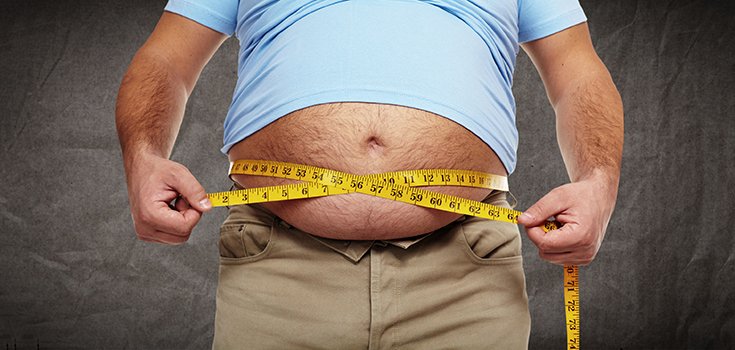CDC Survey: Obesity is Still Growing in America

One of the largest surveys of health in the United States reveals some sobering, though not entirely unexpected news: Americans are fatter than ever. Ouch.
The CDC has been asking Americans 18 and older about their health and their family members’ health every year since 1957. The National Health Interview Survey, which contains data from 2015 on more than 100,000 people, shows that more Americans had health insurance and smoked fewer cigarettes in 2015 than in previous years, but obesity and diabetes rates are still climbing.
In 2015, 30.4% of Americans age 20 and older said they were obese, up from 29.9% in 2014. It’s not a huge increase, but it represents a continuation of a trend that has been going on since at least 1997, when researchers began using the current survey format. At that time, the obesity rate was only 19.4%. [1]

Brian Ward, health statistician at CDC’s National Center for Health Statistics and one of the authors of the report, told CNN:
“That is not a good trend there. But it is not necessarily anything unexpected.”
However, according to other surveys, the obesity problem is far worse than the CDC’s suggests. In 2012, the National Health and Nutrition Survey found that 34.9% of adults age 20 and over were obese. To reach their conclusions, the researchers behind that survey measured the height and weight of more than 9,000 Americans to calculate their body mass index (BMI). The current survey relied on respondents self-reporting their body size.
Michael W. Long, assistant professor at the Milken Institute School of Public Health at George Washington University, said the National Health and Nutrition Survey is probably more accurate, because people tend to exaggerate their height and downplay their weight.
That’s a discouraging thought. The CDC’s findings show that more than 97 million U.S. adults are grossly overweight, but that number might actually be much higher.
Other findings from the CDC survey included:
- The rates of obesity among blacks were higher than Hispanics and white adults. About 45% of black women reported that they were obese, compared with 32.6% of Hispanic women and 27.2% of white women. Similarly, 35.1% of black men said they were obese, compared with 32% and 30.2% of Hispanic and white men, respectively.
- Adults between the ages of 40 and 59 had the highest rates of obesity. In this age group, 34.6% of people said they were obese, compared with 26.5% of adults 20 to 39 years old 30.1% of adults 60 and older.
Long said:
“[The 40 to 59 age group] is really where you see a lot of the effects of obesity on diabetes-related morbidity and mortality, and you see premature deaths related to heart disease and are starting to see some of the cancers related to obesity.”
The survey showed that diabetes is on the rise, too – a natural consequence of rising obesity. Among people 18 and older, 9.5% said they had diabetes in 2015, compared with 9.1% in 2014. Again, the increase isn’t big, but it indicates an ongoing trend.
In 1997, only 5.1% of Americans had diabetes.
Additional Sources:
[1] BGR
